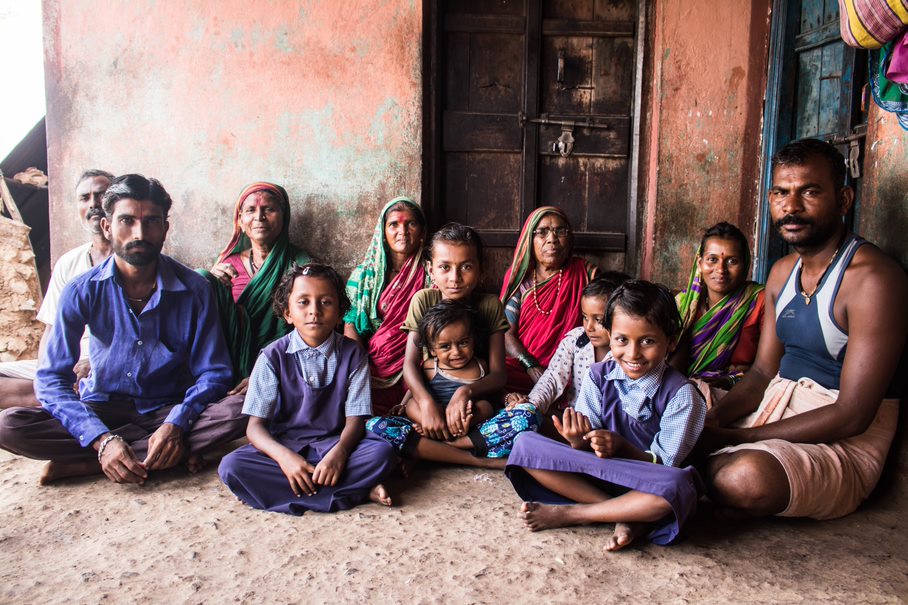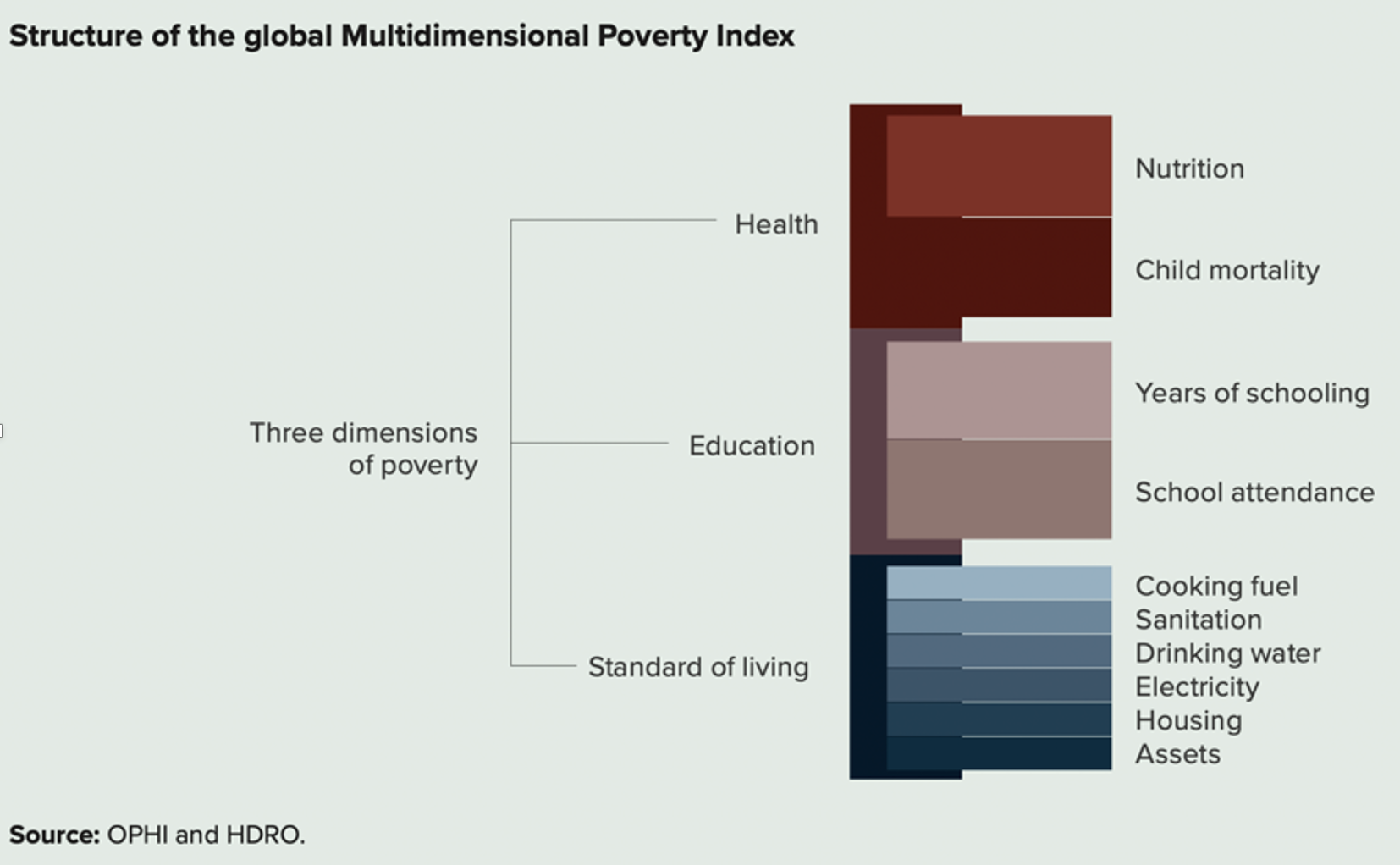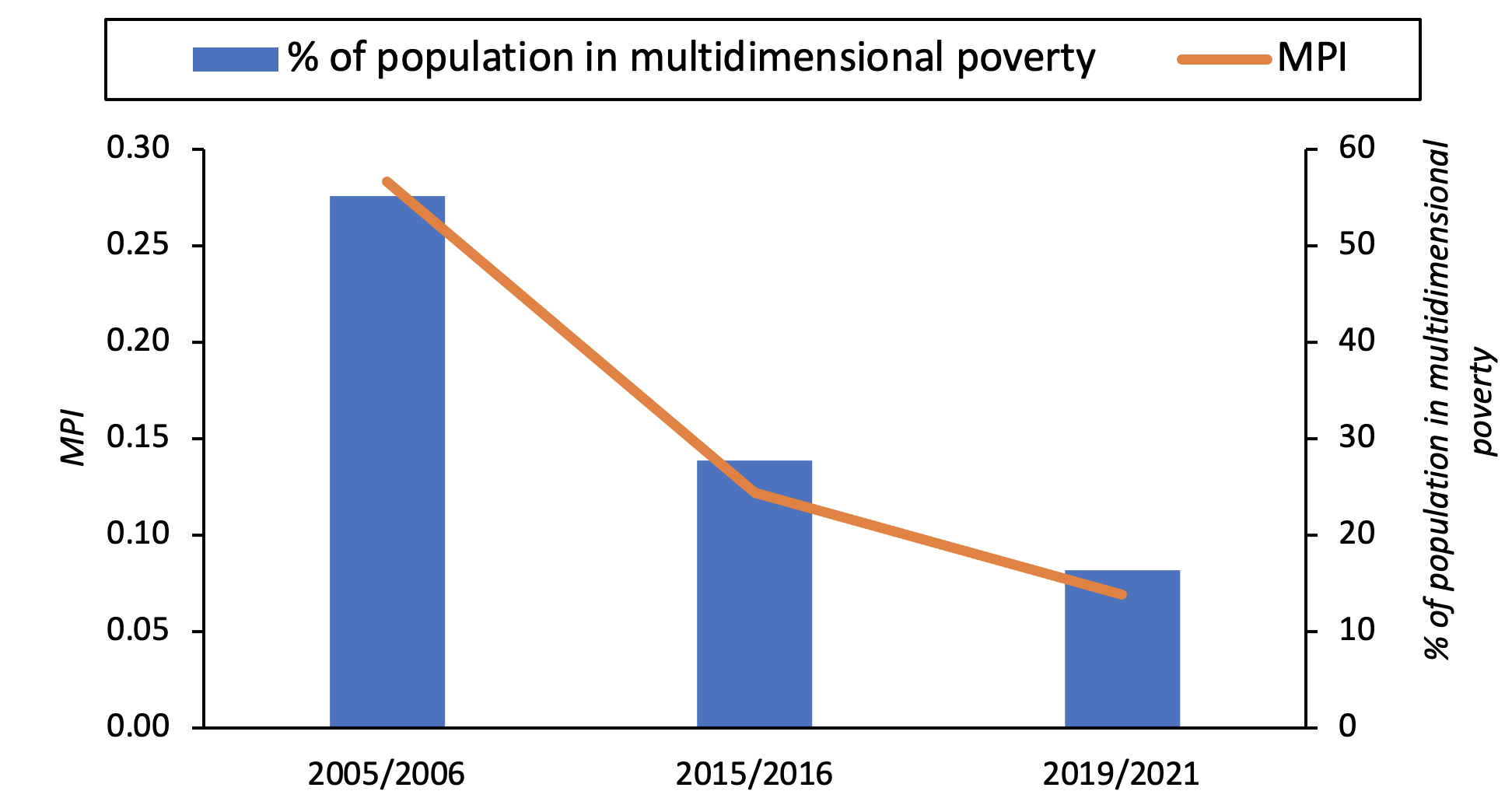What makes one poor – understanding the Multidimensional Poverty Index
November 9, 2022

Understanding the Multidimensional Poverty Index
Poverty is more than just ‘lack of money’. It has dimensions as no two people experience poverty in the same way.
The 2030 Agenda acknowledges that eradicating poverty in all its forms and dimensions, including extreme poverty, is the greatest global challenge and an indispensable requirement for sustainable development.
But what does it mean to end poverty?
UNDP's human development approach has long argued that tracking incomes alone is not enough. To understand the lives of the poor, you must go beyond the income measure - $1.90 or $2.15 a day - and ensure the poor have opportunities, choices, and access to the most basic human needs. Increased incomes are only a means to this agenda, not an end.
Since 2010, UNDP has partnered with the Oxford Poverty and Human Development Initiative (OPHI) to present a new international measure of poverty – the Multidimensional Poverty Index or MPI.
What does MPI mean and measure?
MPI looks at how people experience poverty in multiple, overlapping ways.
The Multidimensional Poverty Index identifies acute deprivations in health, education and standard of living by interrogating 10 indicators - nutrition, child mortality, years of schooling, school attendance, access to cooking fuel, sanitation, drinking water, electricity, and housing, and ownership of assets. One is 'MPI poor' if they are deprived in three or more weighted indicators.

Structure of the global Multidimensional Poverty Index
MPI 2022: India and the world
The 2022 Index covers 6.1 billion people across 111 developing countries. Among them, a billion plus people are multidimensionally poor – nearly twice the number of people in income poverty.
In the latest MPI – released last month – one of the most stunning success stories of poverty reduction comes from India, where a historic 415 million people exited poverty in the last 15 years, and the incidence of poverty fell by half. In the last five years, India has been able to lift 140 million out of poverty.

Global Multidimensional Poverty Index 2022 -"Unpacking deprivation bundles"
The even better news is that this progress is pro-poor - those in the poorest areas and groups saw the fastest absolute improvements – rural areas, children, and the poorest caste and religious groups.
This sharp reduction of poverty in India has helped lift the South Asian region from being one of the poorest in the world.
While further analysis is needed to identify the exact drivers of change, these results are clearly underpinned by multiple policy actions and schemes by successive national and subnational governments.
India has seen visible investments in boosting access to sanitation, cooking fuel and electricity - all indicators that have seen large improvements. A closer look at the nuts and bolts of India's policies and programmes can provide a valuable roadmap for other countries seeking to slash massive poverty.
For the first time, the latest MPI Report introduces 'deprivation bundles' – recurring patterns of poverty that commonly impact those who live in multidimensional poverty across the world. The MPI estimates investigate 850 plus combinations of 10 deprivations to understand the extent and nature of poverty in developing countries.
The most common profile across the 111 countries covered affects 3.9 percent of poor people and includes exactly four deprivations: nutrition, cooking fuel, sanitation and housing. This is the most common profile in India as well.
This tool can support the development of integrated policy responses that could tackle more than one deprivation at a time. For instance, a midday meal scheme targets nutrition and school attendance.
Challenges and way forward
Despite India's remarkable progress, the road ahead is not easy. The country has the largest number of poor people worldwide, including 97 million poor children. Stark rural-urban disparities persist, female-headed households are significantly poorer than male-headed households, and only one Indian state (West Bengal) exited the '10 poorest states' category since the last edition of the report in 2015/16.
Constraints around data availability also mean that this report does not capture the impact of the pandemic and pessimistic scenarios are indeed plausible.
But the India story also rekindles measured optimism.
India has shown that it is possible to reduce poverty at scale. The SDG target 1.2, "to reduce at least by half the proportion of men, women and children of all ages living in poverty in all its dimensions by 2030" is very much within our reach.
UNDP remains committed to partnering with India in its remarkable effort to leave no one behind.

 Locations
Locations